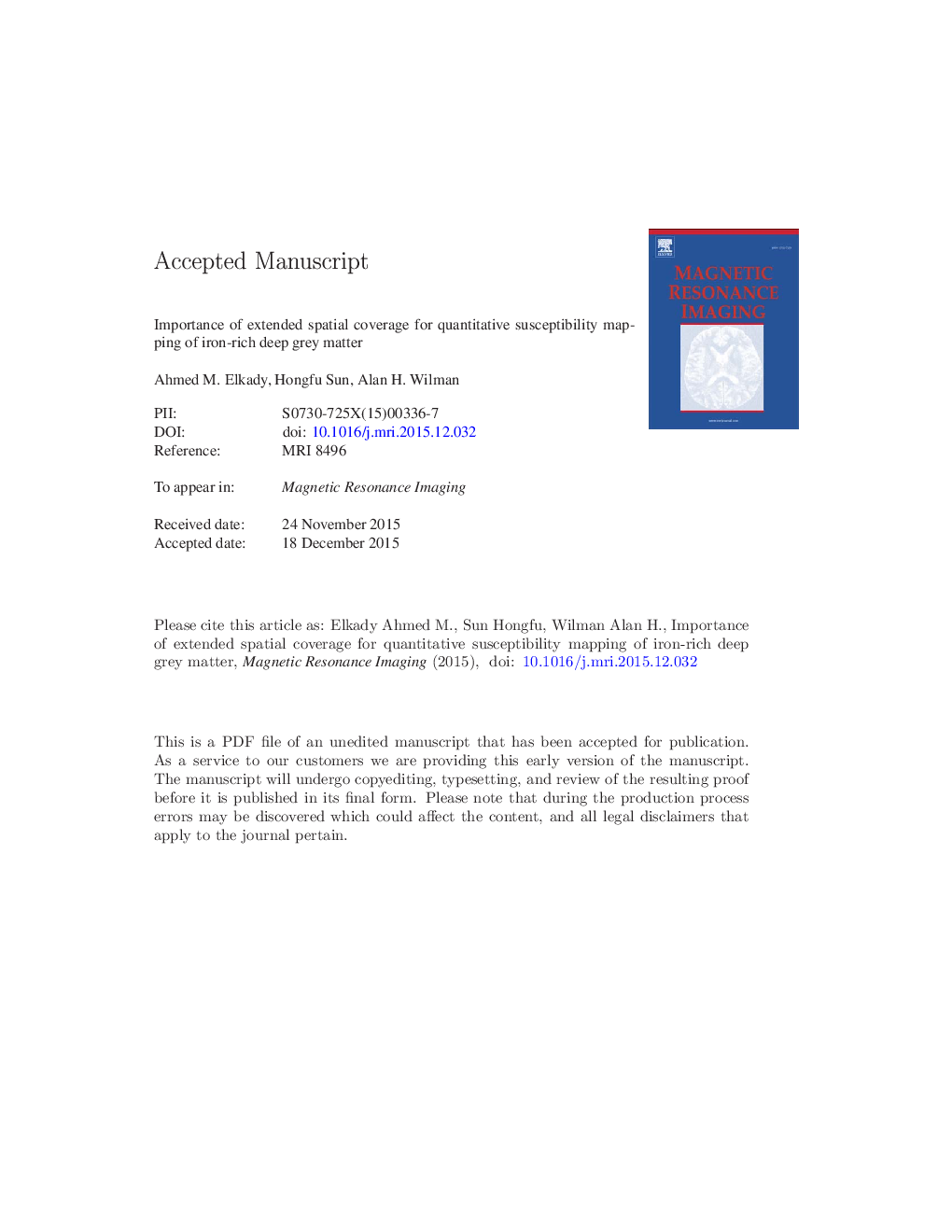| کد مقاله | کد نشریه | سال انتشار | مقاله انگلیسی | نسخه تمام متن |
|---|---|---|---|---|
| 10712403 | 1025183 | 2016 | 21 صفحه PDF | دانلود رایگان |
عنوان انگلیسی مقاله ISI
Importance of extended spatial coverage for quantitative susceptibility mapping of iron-rich deep gray matter
ترجمه فارسی عنوان
اهمیت پوشش فضایی گسترده برای شناسایی حساسیت کمی خاکستری غنی از آهن
دانلود مقاله + سفارش ترجمه
دانلود مقاله ISI انگلیسی
رایگان برای ایرانیان
کلمات کلیدی
موضوعات مرتبط
مهندسی و علوم پایه
فیزیک و نجوم
فیزیک ماده چگال
چکیده انگلیسی
Quantitative Susceptibility Mapping (QSM) is an emerging area of brain research with clear application to brain iron studies in deep gray matter. However, acquisition of standard whole brain QSM can be time-consuming. One means to reduce scan time is to use a focal acquisition restricted only to the regions of interest such as deep gray matter. However, the non-local dipole field necessary for QSM reconstruction extends far beyond the structure of interest. We demonstrate the practical implications of these non-local fields on the choice of brain volume for QSM. In an illustrative numerical simulation and then in human brain experiments, we examine the effect on QSM of volume reduction in each dimension. For the globus pallidus, as an example of iron-rich deep gray matter, we demonstrate that substantial errors can arise even when the field-of-view far exceeds the physical structural boundaries. Thus, QSM reconstruction requires a non-local field-of-view prescription to ensure minimal errors. An axial QSM acquisition, centered on the globus pallidus, should encompass at least 76Â mm in the superior-inferior direction to conserve susceptibility values from the globus pallidus. This dimension exceeds the physical coronal extent of this structure by at least five-fold. As QSM sees wider use in the neuroscience community, its unique requirement for an extended field-of-view needs to be considered.
ناشر
Database: Elsevier - ScienceDirect (ساینس دایرکت)
Journal: Magnetic Resonance Imaging - Volume 34, Issue 4, May 2016, Pages 574-578
Journal: Magnetic Resonance Imaging - Volume 34, Issue 4, May 2016, Pages 574-578
نویسندگان
Ahmed M. Elkady, Hongfu Sun, Alan H. Wilman,
